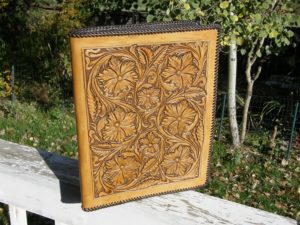April 26th is know as World Leather Day, a day to celebrate the quality, beauty and versatility of full grain leather. Leather can be a sound choice as a more sustainable up cycled product that is more environmentally friendly than some alternatives like plastics.

Leather is one of the oldest products that man has made and it’s still very useful to this day. From clothing to boots to wallets, full grain leather still has many key uses in modern society. It is a versatile and durable product that outperforms and outlasts many modern materials like plastics or synthetic fibers. By replacing plastics and other synthetic polymer based fibers leather can help keep micro-plastics out of the environment and the food chain. Also full grain quality leather can be repaired to extend it’s lifetime or it can be recycled or up cycled into other products, further reducing it’s environmental impact.
All leather is actually a byproduct of the meat industry. Leather starts off as an animal hide that would be discarded in a landfill if it wasn’t converted to a useful product. While the tanning process does produce waste chemicals the industry has made great strides on minimizing their waste and treating their contaminated water runoff to mitigate environmental impacts. The tanning industry has made great strides in reducing their carbon and environmental footprint in recent years.
Full Grain Leather’s Impact
Whether it’s a leather garment, a leather boot or a carved leather notebook like the one shown above, the environmental impact that genuine full grain leather can have on the world should not be dismissed. There is still a wide variety of uses for leather in our modern world and it’s a material that should be embraced. Here on World Leather Day we celebrate this most versatile of materials and how it continues to improve and enhance our daily lives.
